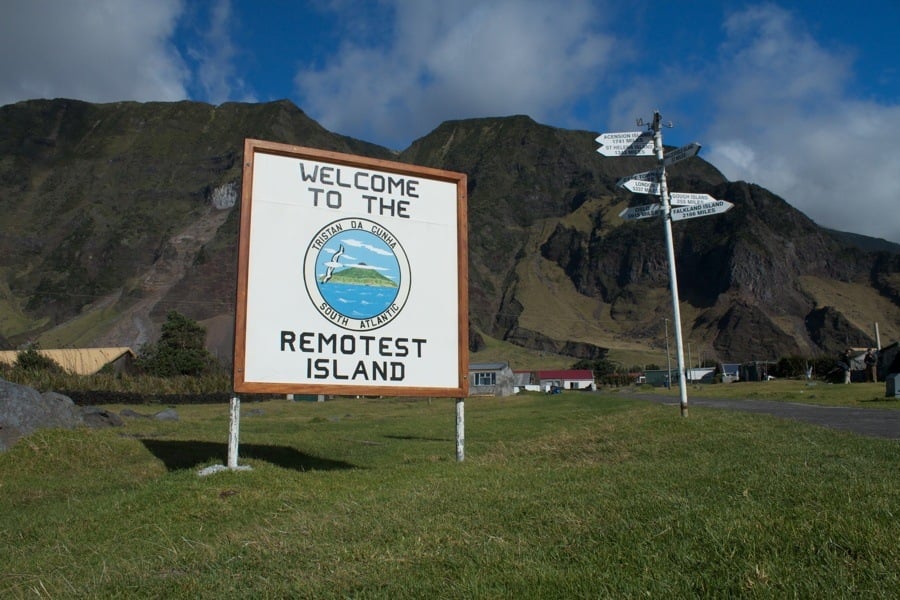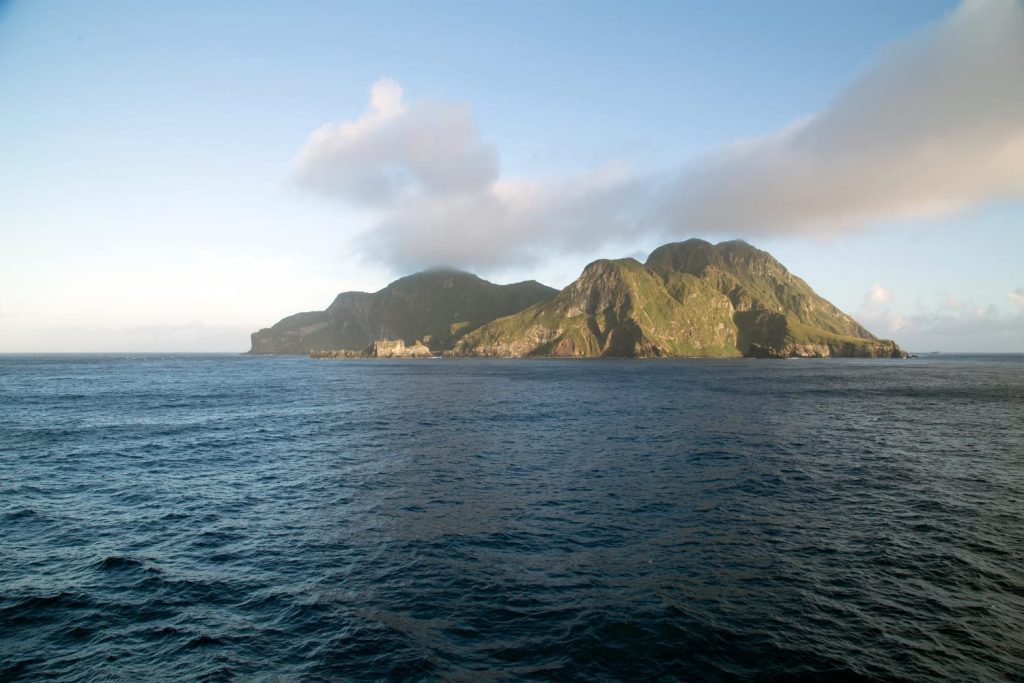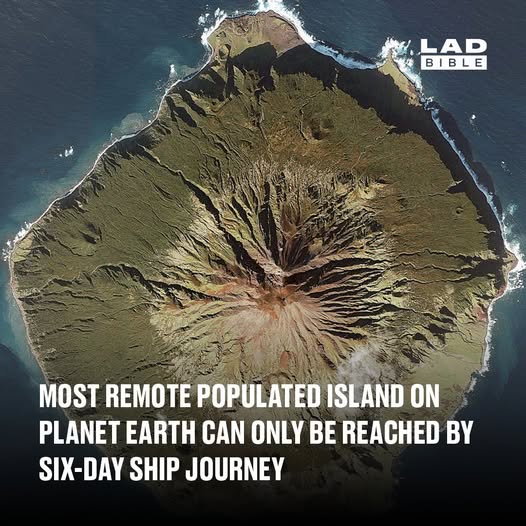Tristan da Cunha, often hailed as the world’s most remote inhabited island, offers a unique blend of isolation and community spirit. Situated in the South Atlantic Ocean, this British Overseas Territory is approximately 1,750 miles (2,816 km) from Cape Town, South Africa, and about 2,000 miles (3,219 km) from South America. The island’s remoteness is underscored by the fact that reaching it requires a six-day voyage by ship from Cape Town, as there are no airstrips or regular air services available.
A Glimpse into Tristan da Cunha’s Geography and Climate
Tristan da Cunha is the largest island in its archipelago, which includes Inaccessible, Nightingale, Middle, Stoltenhoff, and Gough Islands. The main island is roughly circular, featuring a central volcanic cone that rises to an elevation of 6,760 feet (2,060 meters) and is often shrouded in clouds. The climate is characterized by wet, windy, and mild conditions, with the north coast receiving about 66 inches (1,675 mm) of rainfall annually.
The Community of Edinburgh of the Seven Seas
The island’s sole settlement, Edinburgh of the Seven Seas, is home to approximately 238 residents. This tight-knit community is primarily descended from the original settlers and shipwreck survivors who arrived in the 19th century. Life here is marked by a strong sense of safety and trust; doors are often left unlocked, and children can roam freely without concern.

Self-Sufficiency and Economy
Given its isolation, the community relies heavily on self-sufficiency. Agriculture plays a pivotal role, with potatoes being the main crop and livestock raised for domestic consumption. Fishing, particularly for lobster and crawfish, forms the backbone of the local economy, with exports reaching markets in Australasia, the USA, and Europe. Additionally, the sale of postage stamps and souvenir coins contributes to the island’s revenue.
Education and Healthcare
Education is provided by St. Mary’s School, reputed to be the world’s most remote educational institution. The school caters to the island’s children, ensuring that despite geographical isolation, educational standards are maintained. Healthcare needs are addressed by the Camogli Hospital, which was rebuilt in 2017. However, medical emergencies often necessitate long journeys to Cape Town, underscoring the challenges posed by the island’s remoteness.
Challenges of Isolation
Living on Tristan da Cunha comes with its set of challenges. The absence of a phone network and reliable internet means communication with the outside world is limited. The lack of an airstrip implies that all travel and transportation of goods depend on sea voyages, which are subject to weather conditions and can be infrequent. Residents must plan meticulously, often ordering essentials like Christmas presents six months in advance to account for shipping times.
Natural Beauty and Wildlife
Despite these challenges, the island boasts unparalleled natural beauty and biodiversity. It is home to unique species such as the flightless land rail on Inaccessible Island and serves as a habitat for millions of seabirds, elephant seals, and other wildlife not found elsewhere. Gough and Inaccessible Islands have been designated as a UNESCO World Heritage site, highlighting their ecological significance.
Governance and Administration
Tristan da Cunha operates under the governance of a British-appointed administrator, advised by an Island Council comprising elected members from the community. This system ensures that the residents have a voice in local affairs while maintaining ties to the United Kingdom. The island’s constitution, updated in 2009, reflects its status as an equal part of the territory of St. Helena, Ascension, and Tristan da Cunha.

Visiting Tristan da Cunha
For those intrigued by the prospect of visiting, access is limited and requires careful planning. Prospective visitors must obtain permission from the Island Council, and berths on ships are subject to availability. The journey itself is an adventure, offering a rare glimpse into one of the world’s most secluded communities. Tourists can experience the island’s unique culture, natural beauty, and the warmth of its inhabitants.
Conclusion
Tristan da Cunha stands as a testament to human resilience and the enduring appeal of community. Its residents navigate the complexities of isolation with a spirit of cooperation and self-reliance, all while preserving a way of life that is intimately connected to nature. For those seeking an escape from the frenetic pace of modern life, this remote island offers a compelling narrative of simplicity, endurance, and harmony with the environment.

















